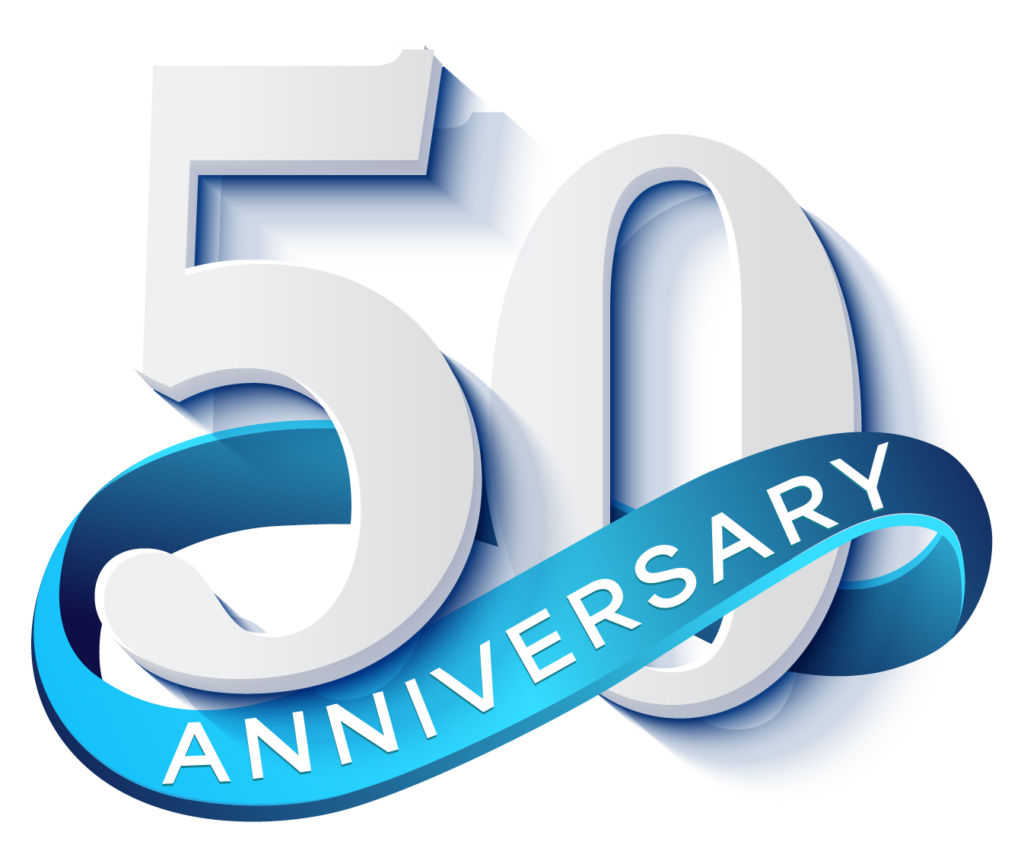We’ve all seen it—teams that seem to work in the same office but operate in completely different worlds. Maybe it’s the lack of communication, unclear goals, or the ever-present office politics that make collaboration a nightmare. Team building activities for small groups and the workplace can be the perfect remedy for these issues.
Imagine taking a break from the daily grind to bond over fun games like “Two Truths and a Lie.” It’s amazing how quickly a team can transition from being fragmented and disengaged to becoming a cohesive and motivated unit. Moreover, fostering a stronger sense of unity and cooperation within a team can translate into increased productivity and success for the bottom line.
In this blog post, we’ll explore various team-building activities for the workplace that can help transform your team dynamics and boost overall productivity.

Icebreaker Activities
Introducing icebreaker activities into the workplace can feel like unleashing a burst of fresh energy within your team. These simple yet powerful team-building activities for the workplace are designed to break the ice, dissolve invisible barriers, and lay the groundwork for a more connected, engaged, and high-functioning team.
Icebreakers are more than just fun and games—they’re strategic tools that can build trust, encourage collaboration, and set a positive tone for your entire group. It’s about creating a safe space where everyone feels valued and connected from the get-go. When people laugh and share openly, they’re more likely to be engaged and cooperative, which translates into higher team productivity and morale.
1. Name Games
Remembering a colleague’s name is the first step towards building a meaningful connection. Name games are designed to help team members learn and remember each other’s names playfully. For instance, the “Adjective Description” game involves participants attaching an adjective to their names that starts with the same letter. Example: “Generous George”. This not only helps with name recall but also gives a glimpse into the personality of the teammates, creating immediate, memorable connections.
2. Two Truths and a Lie
“Two Truths and a Lie” is a beloved classic that never fails to entertain while revealing fascinating tidbits about your colleagues. Each participant shares three statements about themselves—two truths and one lie—while the rest of the team guesses which one is the lie. It’s a brilliant way to discover surprising talents and interests, fostering a sense of curiosity and camaraderie
3. Human Knot
The “Human Knot” is an excellent physical icebreaker that fosters teamwork and problem-solving skills. Participants stand in a circle, extend their hands, and grab the hands of two different people not standing next to them. The challenge is to untangle the knot without letting go of each other’s hands. A study by Benjamin et al shows that physical activities like this can enhance team bonding. It’s a fun, interactive way to highlight the importance of effective communication skills and cooperation.
4. The Paper Tower Challenge
The Paper Tower Challenge is a fun and creative activity that encourages teamwork and engineering skills. Teams are given a limited amount of materials—typically just sheets of paper and tape—and tasked with building the tallest tower possible within a set time frame. The objective is to create a stable structure that can stand on its own. This challenge fosters collaboration, as team members must communicate effectively, brainstorm ideas, and test their designs. It not only promotes a spirit of friendly competition but also emphasizes the value of creativity and problem-solving in approaching design challenges.
5. The Great Egg Drop
Another fun and thought-provoking icebreaker is the Great Egg Drop challenge. In this activity, teams are tasked with creating a protective structure for a raw egg using various materials like straws, newspapers, and tape, with the goal of dropping it from a height without breaking it. After a set period, each team presents their design and performs the drop. This activity not only fosters teamwork and strategic planning but also teaches valuable lessons about risk management and adaptability. Participants learn to work together under pressure, encouraging dialogue and creative thinking as they test their engineering skills.
Communication Enhancement Exercises
Effective inter-team communication is the lifeblood of any high-functioning team. Without it, even the best strategies fall flat, and talented individuals can underperform. Good communication fosters trust, resolves conflicts swiftly, and ensures that everyone is on the same page, making it indispensable for collaborative success.
1. Active Listening Exercises
Active listening isn’t just about hearing words—it’s about understanding the emotions and intentions behind them. An excellent exercise is the “Mirroring” game, where one person speaks about a topic while the other repeats what was said, refining their comprehension and empathetic communication.
2. Role-Playing Scenarios
Role-playing scenarios place team members in hypothetical situations where they must navigate challenges using clear and effective communication. For example, discussing a fictional project’s hurdles can help illustrate different communication styles and their impacts. According to a study done on students role-playing can enhance strategic thinking and empathy, as participants gain insight into their peers’ perspectives and improve their problem-solving capabilities in real-life scenarios.
3. Group Storytelling
Group storytelling is a fantastic way to enhance communication and creativity within your team. In this exercise, participants create a story together, with each person contributing a sentence in turn. This not only encourages active engagement but also develops listening skills, as each member must pay attention to previous contributions to maintain narrative continuity. The result is a unique, often humorous tale that reflects the diverse perspectives and ideas within the group, fostering a sense of togetherness and creativity.
4. Feedback Circles
Feedback circles provide a structured environment for team members to develop their communication skills by giving and receiving constructive feedback. In this activity, team members sit in a circle and take turns sharing something they appreciate about another member’s work, followed by one area for improvement. This approach emphasizes positive reinforcement while also creating a safe space for sharing areas that need development. It builds trust and helps individuals learn to articulate their thoughts clearly and respectfully, thereby enhancing overall team communication.
5. Charades with a Twist
Charades is a classic game that can be adapted to increase communication effectiveness. In this variation, instead of simply acting out a word or phrase, participants must convey workplace-related scenarios or concepts without using words. The challenge lies in expressing ideas through gestures and expressions, encouraging team members to think creatively about how to communicate effectively without verbal cues. This activity sharpens nonverbal communication skills and highlights the importance of understanding body language, further enhancing collaboration and teamwork within the group.
Collaboration and Problem-Solving Challenges
Feeling truly connected and unstoppable as a team requires more than just communication; it hinges on team collaboration and tackling challenges together. The magic of collaboration lies in uniting a diverse set of talents and perspectives toward a common goal. According to a report by McKinsey, collaborative teams are five times more likely to achieve high performance. Teams can transform their coordination and produce astounding results by engaging in team-building activities for small groups which are designed to hone these skills. Take part in team-building exercises that highlight interdependence, foster mutual respect, and establish a shared purpose to see your team’s collaborative potential unfold.
1. Problem-Solving Activities
Navigating through complex problems effectively is key to a team’s success. Deloitte indicates that 63% of executives consider problem-solving to be a critical skill for driving business success. Activities that simulate real-world problems and require collaborative solutions can significantly sharpen this prowess. Whether it’s brainstorming sessions or strategic gameplay like chess, such activities ignite critical thinking, creativity, and team cohesion, leading to more innovative solutions and stronger team bonds.
2. Escape Room Challenges
Step into a space where teamwork is not optional but essential for success. Escape rooms provide a thrilling environment where participants must solve puzzles and decipher clues to “escape” within a set time. These challenges test decision-making, communication, and trust under pressure.The shared exhilaration of cracking codes and uncovering clues together forges unbreakable team synergy.
3. Marshmallow Tower
This seemingly simple exercise involves teams working together to build the tallest tower possible using only spaghetti, tape, string, and a single marshmallow on top. The Marshmallow Tower challenge promotes creative thinking and highlights the importance of prototyping and iterative development. Plus, the highly interactive nature of this exercise fosters a playful yet challenging environment, driving home key lessons in collaboration.
4. Team-Based Scavenger Hunts
Imagine the thrill of racing against time with your teammates to solve riddles, discover hidden treasures, and navigate through exciting tasks. Team-based scavenger hunts are not only a bundle of fun but also potent tools for enhancing cooperation and strategic planning. By blending the excitement of competition with the necessity for collaboration, scavenger hunts manage to captivate while cultivating essential team dynamics.
Trust-Building Activities
Trust isn’t just a nice-to-have; it’s the keystone of a thriving team dynamic. When it’s present, members feel safe, connected, and ready to tackle any challenge together. Research shows that high-trust teams outperform their competitors by 286% in terms of growth and performance. When trust is ingrained within a team, communication flourishes, conflicts are resolved swiftly, and collective creativity is unleashed. Members feel valued and understood, fostering an environment where innovative ideas and constructive feedback can flow freely. In short, trust transforms ordinary groups into extraordinary teams.
1. Trust-Building Exercises
Building trust doesn’t happen overnight—it takes intentional effort and the right activities to foster genuine connections. Trust-building exercises are specifically designed to break down barriers and allow team members to see each other’s vulnerabilities and strengths. These exercises not only bond team members but also reveal the authentic, human side of colleagues, reinforcing mutual respect and camaraderie.
2. Blindfolded Trust Walk
Few exercises are as emotionally charged and revealing as the Blindfolded Trust Walk. In this activity, one team member is blindfolded and guided by a partner through a series of obstacles. This exercise forces participants to relinquish control and place their absolute trust in another person. The experience of guiding and being guided fosters deep connections and mutual reliance that extend beyond the exercise itself.
3. Truth Circles
Truth Circles create a safe space for team members to share personal stories, challenges, and achievements. By sitting in a circle and taking turns speaking, participants reveal aspects of their lives that may not be apparent in a professional setting. This exercise can be profoundly moving, as team members often share deeply personal experiences. Truth Circles humanize colleagues and deepen relationships, making the team more cohesive and resilient.
4. Trust Fall Exercises
The Trust Fall might seem like a cliché, but it remains one of the most powerful trust-building activities. In this exercise, a team member stands on an elevated platform and falls backward, trusting their teammates to catch them. The physical act of falling and being caught symbolizes the leap of faith it takes to trust others. The sheer act of placing one’s safety in the hands of fellow team members creates an indelible bond, reinforcing the reliability and support system within the group.
Diversity and Inclusion Workshops
Embracing diversity means more than just acknowledging differences; it involves celebrating and leveraging these differences to spark creativity and problem-solving. Data by McKinsey & Company reveals that organizations with more diverse teams are 36% more likely to outperform their competitors. Diversity brings a wealth of perspectives, experiences, and ideas that, when harnessed correctly, can lead to groundbreaking innovations and solutions. It’s about creating a workplace where everyone feels valued, heard, and empowered to contribute their best.
1. Cultural Exchange Workshops
Cultural exchange workshops are powerful tools for fostering understanding and respect among team members from different backgrounds. These workshops often involve sharing stories, traditions, and customs, which can be enlightening and bonding. These workshops help demystify cultural differences and highlight the strength that comes from a mosaic of unique perspectives.
2. Privilege Walk
The Privilege Walk is a profound team-building event that can reveal the hidden dynamics of privilege and challenge participants to reflect on their experiences. Participants take steps forward or backward based on their responses to various statements, visually representing the disparities among them. This eye-opening team-building activity for small groups underscores the importance of recognizing privilege and fosters a company culture of inclusiveness and support.
3. Diversity Bingo
Diversity Bingo is a fun and interactive way to learn about teammates’ backgrounds and experiences. Participants fill in a bingo card with facts such as “Speaks more than one language” or “Has lived in another country.” This game not only sparks conversations but also highlights the rich diversity within the team. Diversity Bingo is a playful yet impactful way to celebrate and learn from the diverse experiences of team members.
4. Team Mosaic
The Team Mosaic activity encourages creativity while highlighting the diversity within the group. In this exercise, each team member is given a blank canvas or piece of paper and a set of art supplies. Participants are asked to express themselves through art, using colors, shapes, and images that represent their backgrounds, values, or aspirations. Once everyone has completed their piece, the individual artworks are combined to create a larger mosaic, symbolizing the collective strength and variety of perspectives within the team. This activity not only fosters creativity but also sparks conversations and connections, reinforcing the value of each member’s unique contribution to the team dynamic.
Understanding Team Dynamics
Mastering the art of team dynamics isn’t just about knowing your team—it’s about understanding the subtle intricacies that can either propel success or sow discord. So, what exactly goes into building a well-oiled, high-performing team?
Team Formation Stages
Every team (even remote teams) goes through a series of developmental stages that psychologist Bruce Tuckman famously identified as:
- Forming Stage: New team members are generally polite and excited but also anxious about their roles and responsibilities. Team leaders must provide clear direction and set the tone for how the team will function.
- Storming Stage: This is where things get complicated—expect heightened tension and conflict as team members start to challenge each other and jockey for position. Here’s where open communication skills and effective conflict resolution strategies become invaluable.
- Norming Stage: The entire team begins to establish ground rules and standards of performance. Fostering a sense of shared purpose and reinforcing positive behaviors are key during this phase.
- Performing Stage: Teams operate like a well-oiled machine. Roles are clearly understood, and collaboration comes naturally. Celebrating achievements and continuously setting new goals can keep the momentum going.
Factors Influencing Team Dynamics
Several elements can either strengthen or undermine team dynamics. Trust is the cornerstone—without it, even the most skilled team can crumble. For instance, Google’s Project Aristotle found that psychological safety, where team members feel safe to take risks, is the number one factor influencing team success. Creating an environment where trust and psychological safety are priorities can significantly enhance team cohesion and morale.
Communication styles also play a pivotal role. Teams with open, transparent and effective team communication channels tend to be more efficient. Regular check-ins and fostering an environment where everyone feels heard can make a world of difference.
Leadership is another critical factor. Leaders who inspire, motivate, and are genuinely invested in their team’s well-being tend to cultivate more engaged and productive teams.
Our Leadership Development Coaching Program at Personalysis is designed to bring more awareness, understanding, and impact to your leadership journey. With our scientifically supported personality assessment and your unique Personalysis Profile, as a team leader, you can lead your team to success by developing a deep awareness of yourself and enhancing your ability to understand and influence others.
Learn More About How Personalysis Can Help You Develop Your Leadership Skills For Success!
Understanding and leveraging these factors can transform not only your team’s dynamics but also pave the way for extraordinary achievements. The road to becoming a high-functioning team may be complex, but the rewards are worth every effort.
Best Team-Building Activities for Work: Final Thoughts
Incorporating these team-building activities for the workplace can make a transformative difference. From trust-building exercises and cultural exchange workshops to inclusive team-building games for small groups like Diversity Bingo, these team-building activities for the workplace do more than just break the ice—they build a stronger, more cohesive unit. Investing in team-building isn’t just about fun and games; it’s about creating a foundation for success and fulfillment in the workplace.
Ready to elevate your team to new heights? Learn more about our leadership development coaching at Personalysis and discover how we can help your team thrive.
Learn More About How Personalysis Can Help You Develop Your Leadership Skills For Success!




